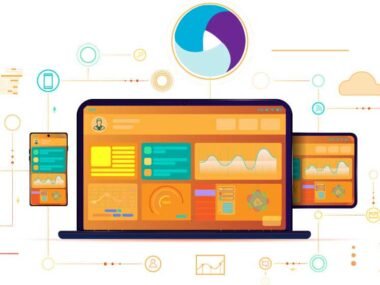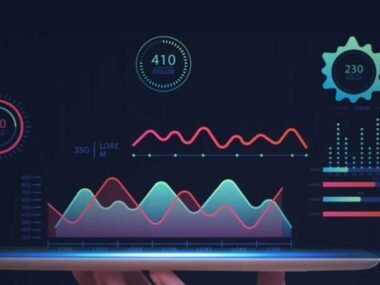When people think of healthcare breakthroughs, they often picture a new medication or a life-saving vaccine. And while these discoveries are certainly important, they no longer represent the full picture of what healthcare innovation really means today. In fact, many of the most impactful advancements aren’t happening in labs. They’re happening in how care is delivered, accessed, and monitored.
This shift is especially noticeable in healthcare systems across the United States, where providers face rising patient volumes, workforce shortages, and pressure to reduce costs while improving outcomes. In places like California, where diverse populations require personalized and efficient care, health systems are turning to technology to fill the gaps. Providers aren’t just prescribing treatments anymore. They’re using tools to monitor patients in real time, adjust care remotely, and respond faster than ever.
The future of healthcare is about connection, accessibility, and proactive support. One of the clearest examples of this new wave of innovation can be seen in how patients are being cared for beyond the walls of the hospital or clinic.
Monitoring from Anywhere: The Rise of Remote Care Tools
One of the biggest shifts in healthcare today is the ability to monitor and manage patient health from a distance. It’s changing the game for people living with chronic conditions, recovering from surgery, or needing ongoing support between visits. Instead of relying solely on scheduled appointments, providers can now track a patient’s health status in real time without them ever leaving home.
To support these changes, many healthcare organizations are turning to remote patient monitoring software that allows clinicians to receive timely updates on vital signs, symptoms, and treatment adherence. This type of software can collect data from devices like blood pressure cuffs, glucose meters, or wearable sensors and send it directly to the care team. It’s especially helpful for managing chronic conditions such as hypertension, diabetes, or heart disease, conditions that affect millions and require consistent attention.
These systems help providers intervene earlier, prevent unnecessary hospitalizations, and give patients a stronger sense of involvement in their care. For practices and clinics, this approach also improves efficiency and creates new opportunities for billing and reimbursement through programs that support virtual care. It’s no surprise that remote monitoring is becoming a cornerstone of modern healthcare delivery.
Data-Driven Decisions: Leveraging AI and Predictive Analytics
Today’s healthcare isn’t just about treating symptoms. It’s about using data to predict and prevent problems before they start. Artificial intelligence (AI) and predictive analytics are helping doctors and health systems make smarter, faster decisions by analyzing large sets of data and identifying patterns that the human eye might miss.
For example, AI can review thousands of imaging scans to spot early signs of disease or flag high-risk patients who may need closer monitoring. These tools are also being used to improve workflow in hospitals by predicting which patients are likely to be readmitted or which treatments are likely to be most effective based on patient history.
This kind of technology supports a more proactive approach to care. Instead of waiting for a patient to show up at the ER, providers can take steps earlier to keep them healthy and at home.
Virtual Health and Telemedicine: Expanding Access to Care
Telemedicine saw explosive growth during the pandemic, and it’s not going away. What started as a temporary solution has turned into a permanent option for many people, especially those in rural or underserved communities where healthcare providers are harder to reach.
Virtual visits allow patients to connect with doctors, therapists, or specialists through video calls, often from the comfort of their own homes. It reduces travel time, eliminates waiting rooms, and can make it easier to stay on top of follow-up appointments.
In addition to improving access, telehealth has proven to reduce no-show rates and increase patient satisfaction. It’s especially helpful for managing mental health, minor illnesses, or chronic conditions that require regular check-ins but not necessarily a physical exam. As technology continues to improve, virtual care will only become more seamless and integrated into everyday healthcare.
Patient-Centered Innovation: Customization and Engagement
Healthcare innovation also means giving patients more control over their health journey. Instead of being passive recipients of care, patients are now active participants, thanks in large part to technology.
Patient portals, mobile health apps, and digital education tools allow individuals to track symptoms, access test results, manage appointments, and communicate directly with their providers. These platforms make it easier for patients to stay engaged and informed, which leads to better adherence to treatment plans and improved outcomes.
Some tools even use reminders and gamification to encourage medication adherence or lifestyle changes. Whether it’s a nudge to take a walk, drink more water, or refill a prescription, these small digital touches can make a big difference in long-term health.
Healthcare at Home: The New Care Environment
Another major shift is happening in where care is delivered. More and more services that used to be hospital-based are now happening in patients’ homes. From home-based physical therapy to in-home IV treatments, this approach not only increases comfort—it also reduces the risk of hospital-acquired infections and cuts down on costs.
Home health care supported by technology allows nurses, therapists, and aides to document visits digitally, coordinate with physicians remotely, and use portable medical devices for diagnostics and treatment. In high-risk cases, home care can be paired with remote monitoring to ensure that the care team has a full picture of the patient’s progress.
This model is especially helpful for elderly patients or those with mobility challenges. It also supports family involvement in care, which can improve both emotional and physical outcomes.
Breaking Down Silos: Interoperability and Integration
One of the biggest challenges in healthcare has always been the lack of communication between different providers and systems. A patient might see a primary care doctor, a specialist, and a therapist, but their records don’t always follow them. That creates inefficiencies and increases the chances of error.
Modern innovation is addressing this problem through interoperability, the ability of different systems to share and access health information seamlessly. Integrated electronic health records and connected platforms help ensure that everyone on a patient’s care team is on the same page.
This kind of integration doesn’t just make things easier for providers. It also improves the patient experience. It reduces paperwork, ensures consistent treatment, and makes transitions of care smoother, especially after a hospitalization or major diagnosis.
The future of healthcare innovation isn’t just in the lab. It’s in how we care for people. From remote monitoring and AI-powered tools to virtual visits and personalized apps, today’s breakthroughs are changing lives in ways that go far beyond new medications.
These advancements are helping providers deliver smarter, more accessible, and more compassionate care. They’re making it easier for patients to engage with their health and stay connected to their care teams, whether at home, on the go, or in rural towns far from the nearest hospital.










